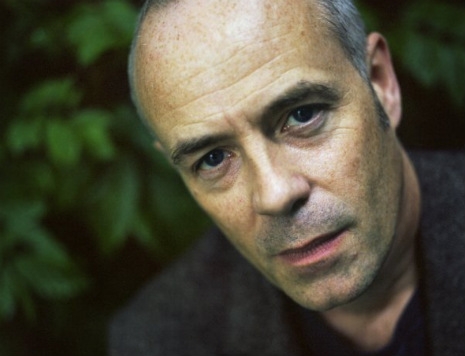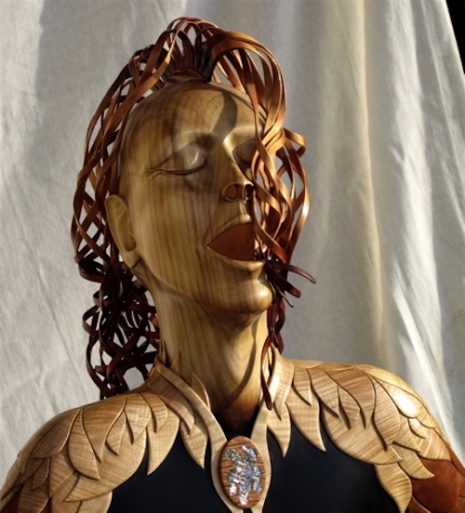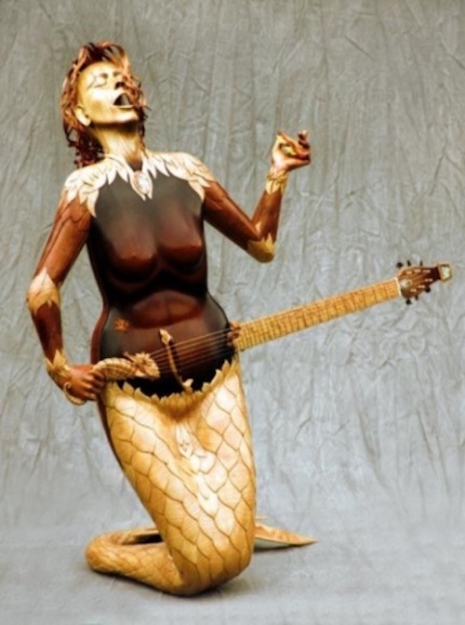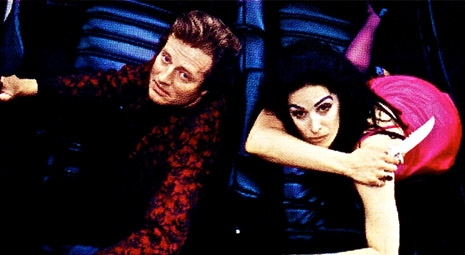
I have always liked Barney Hoskyns’ writing. He has a subtle and incisive way of getting to the seed of any story. His biography on Montgomery Clift, Beautiful Loser was sublime. More recently Hotel California: Singer-Songwriters & Cocaine Cowboys In The L.A. Canyons was perhaps the best book written on West Coast music. He also wrote a commendable biography on Tom Waits, and written histories on Glam and Soul, particularly the exceptional Say It One Time For The Brokenhearted: Country Soul In The American South.
Now Hoskyns has delivered Trampled Underfoot: The Power and Excess of Led Zepelin, which is the best biography written about Zeppelin to date.
It’s the best because Hoskyns’ book is a mammoth oral history of the band, told through over 130 interviews, featuring the key players, the management, the wives, the girlfriends, the roadies, the producers, the engineers, the PR people, the record label, the security, the druggies, right down to the designers of the album sleeves and office staff. Where there have been gaps, caused by death (drummer John Bonham, manager Peter Grant) or refusal (Kenneth Anger), Hoskyns has lifted directly from the original, key interviews, to maintain the story’s immediacy.
In an exclusive interview with Dangerous Minds, Barney Hoskyns talked to about Trampled Underfoot and the power and excess of Led Zeppelin.
DM: Why did you choose Led Zeppelin?
Barney Hoskyns: ‘I chose Zeppelin because I love them. The mission really was not to preach to the converted, if you like, it was to an extent to preach to the unconverted. Obviously, I hope that the Led Zeppelin community will read it and take to it, and embrace it. But I think I wanted to pitch it at as much skeptics, to say look a) Zeppelin’s music was incredible and b) the story is extraordinary.
‘And I think there was an opportunity to demystify the story a little bit, just to sort of get away from glorifying the usual larks and antics, and Hell-raising, and to make the story a bit more real. I think, was the mission, and that’s kind of how the book mutated into an oral history. Because it didn’t start out like that, but the more interviews I did, I ended up doing over 130, the more it became clear to me there was an opportunity to tell the story in a different way, with the kind of immediacy you get from people just talking quite openly and candidly. And I thought let’s see if we can tell the story in a kind of continuous way, from start to finish. That was the mission and that was the methodology.’
Hoskyns starts the book from the with the earliest moments in the band member’s careers. This is a youthful Jimmy Page showing his prodigious skills on TV with his skiffle band, before going onto a brief career as a session musician.
Page was so talented a guitar player that unlike most session musicians, he played both acoustic and electric guitar. Jimmy could play anything, and was the guitar on records by The Kinks, Donovan, Lulu and even Val Doonican. As can be seen from Hoskyns’ book, Page dedicated himself so much to playing his guitar that he was removed from the world, becoming that slightly isolated, mysterious figure of his adult years.
Most session men were middle-aged, with an interest in angling and loft-conversion. Yet, it was at one session that Page met a bass player and sometime musical arranger, John Paul Jones. The pair got on because of their age, but also because they had a respect and admiration for each other’s talent.
While Page and Jones were connecting in recording studios, Robert Plant and John Bonham were performing with various bands across Birmingham, which in the mid-1960s was considered to be the next Pop Capital of Britain after Liverpool, as it had so many music acts (The Move, The Moody Blues, Steve Winwood) coming to the fore. Plant and Bonham were equally dedicated to their talents. Bonham was a self-taught drummer, who even then was showing the skill and innovation that his contemporaries found difficult to match. It’s interesting to note that all these years later how many people in Hoskyns’s book still describe Bonham as the best.
Robert Plant was also trying out his skills fronting various bands. He had a love of Blues and Rock, and was developing his powerful and unique way of singing.
The turning point came when Page joined The Yardbirds at Jeff Beck’s insistence, which led Page into the orbit of manager Peter Grant.
Grant had the reputation of a hard man, one that he liked to play up. When stories circulated he had hung some recalcitrant manager over a penthouse balcony by his ankles, Grant neither admitted nor denied the charge, only quipping, “Let’s say I acquainted him with the view.” This was the kind of whispered tale that created the fear and myth about Grant.
As manager, Grant became like a father to Page and helped support the young guitarist with his vision to create a new Supergroup, one that he could lead. Page contacted Jones, and then through different connections, Plant and Bonham were brought in. The foursome that was to become the biggest band of the 1970s was born.

Author: Barney Hoskyns
DM: Why did Led Zeppelin take-off? Was there a gap, say after The Beatles split?
Barney Hoskyns: ‘I think there was a gap there and Peter Grant spotted the opportunity, if you like. I think he intuitively knew there was room for a new band, a supergroup, you might call it, though Zeppelin weren’t a supergroup in the sense of Cream was a supergroup. The disbanding of Cream left a gap for Atlantic Records. Clapton had decided to mellow out and to calm down, and that allowed some other bands, or Zeppelin to step into the breach.
‘I think it was an evolution musically. ‘There are 4 guys with extraordinary talent, who have respect for each other. And they all kind of liked each other. They hung out with each other. There weren’t ego struggles, until the tensions start coming in as a result of many things, not just drugs. But until that moment, you know, these 4 guys, they weren’t punching each other in the dressing room. They’re having fun.
‘And, it was about the alchemy of these 4 musicians that was at the heart of everything. Without that you can hype a band to death and but it’s not going to mean much if there isn’t some substance and quality there form the outset, and there was that. But that’s not the whole story, as the book makes clear, there was an awful lot else that went on around this. There was the machinery, an extended family, that all contributed in creating this machinery, that all contributed to creating the phenomenon.
‘It was all very sudden and was done by sheer brute force in many ways. Peter Grant was a powerful figure who decided that Zeppelin was going to be his mission then nothing was going to stop him from turning that band into the biggest band on earth. And it was kind of brilliantly done. If the music hadn’t been as great as it was then even Peter Grant would never have succeeded in that mission.
‘The thing is there will always be a wave of adolescents, a new generation coming through that will need a band of its own. I’m not sure that’s the case now, as I think pop culture, rock culture, is very different, but then, there was a new generation, a semi-generation coming through, for whom bands like The Beatles and The Stones belonged to their older siblings, or boys and girls who were 4 or 5 years older. I think Led Zeppelin were the best in every sense technically and mythologically, as they sort of captured the imagination at that time, especially in North America, where there was almost a religious aspect, a mass cult of Zeppelin, the likes of which we will never see again.’
More from Barney Hoskyns plus bonus of Led Zeppelin ‘In Concert’, after the jump…












